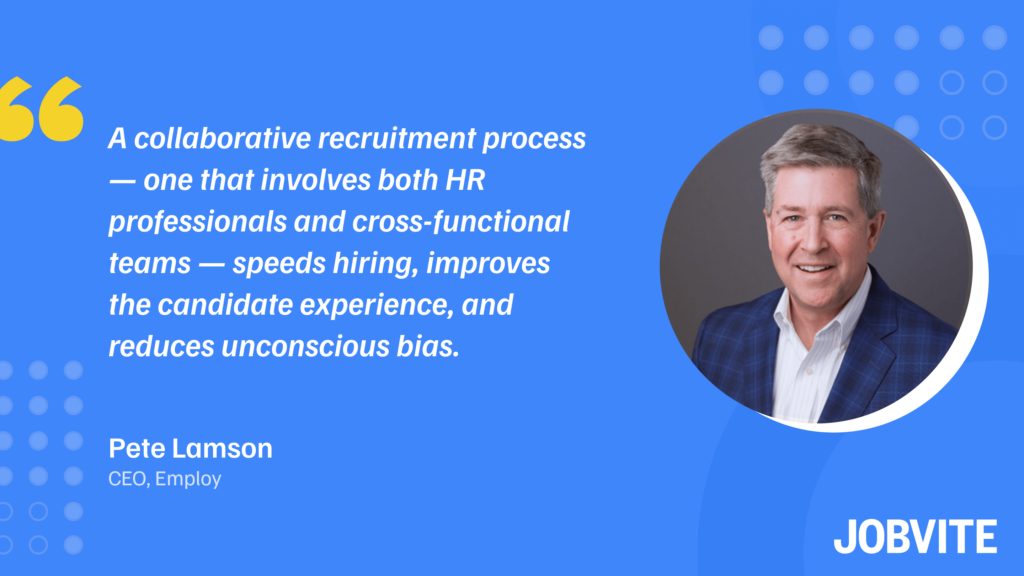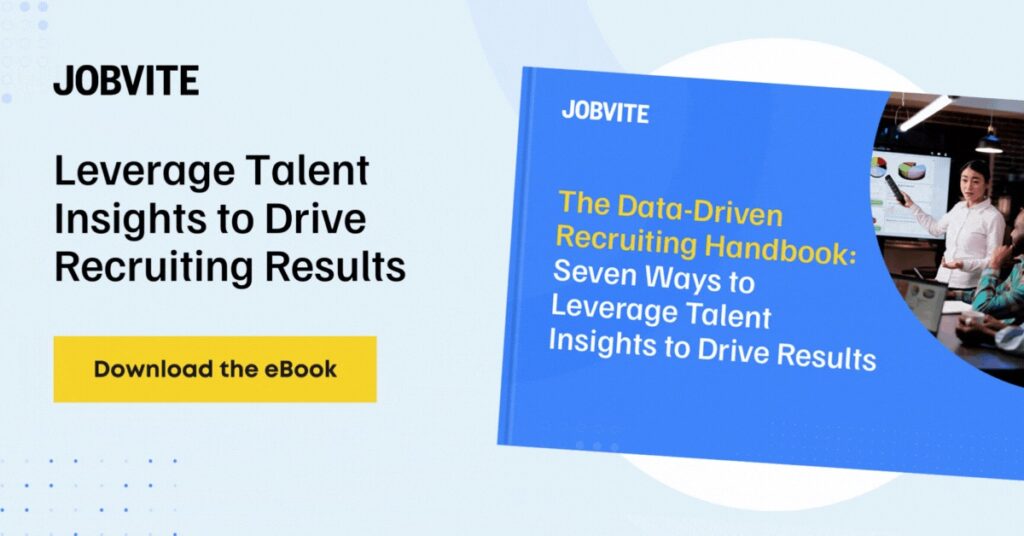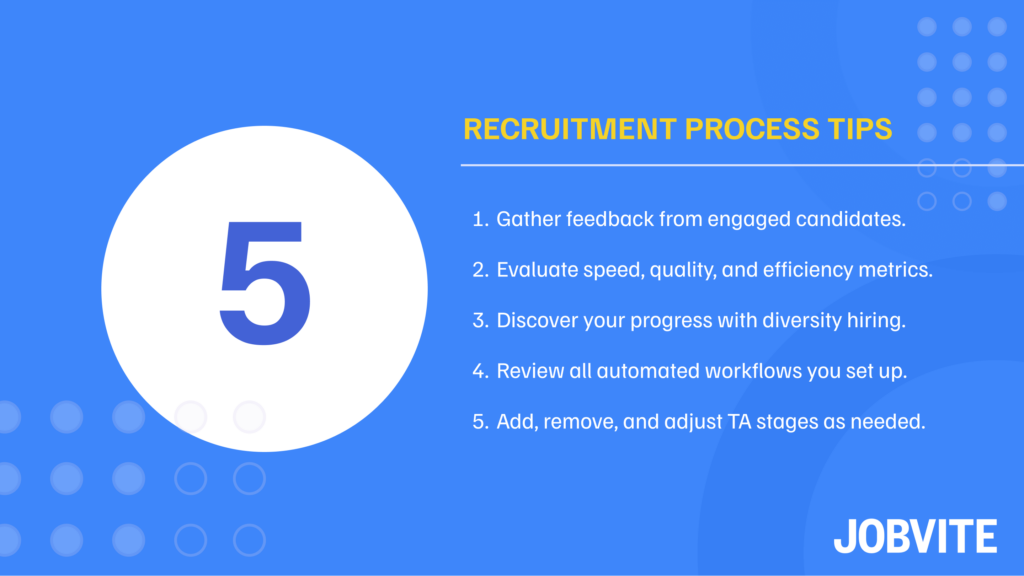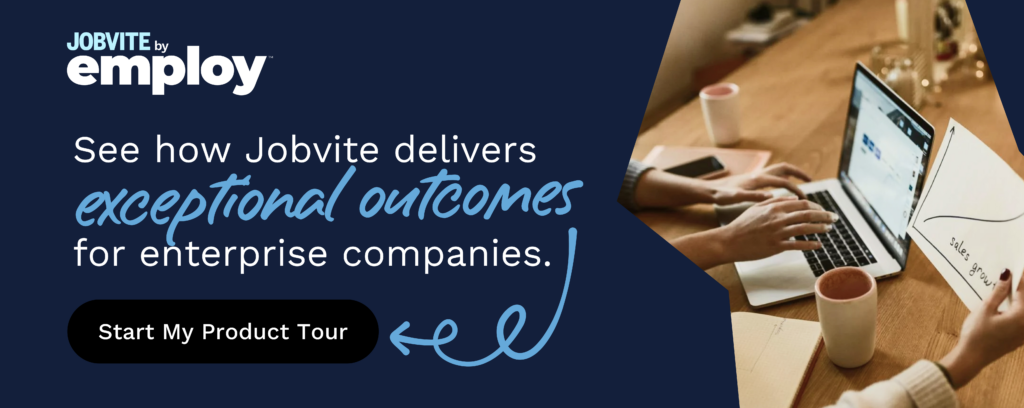Is your recruitment process falling flat lately? Is the applicant process too long or confusing for prospective applicants? Are poor candidate assessments resulting in lackluster hires?
If the answer is yes to any of these questions, then it’s time to go back to the drawing board.
And that means you need to analyze your talent acquisition team’s recent performance — from interact with job posts on social media and career communities, to the number of prospects from your employee referral program advanced in the funnel — in your applicant tracking system.
If your ATS doesn’t have built-in talent analytics, that may ultimately be the root cause (or at least biggest issue) preventing your TA specialists from effectively attracting, engaging, and converting potential candidates and making the desired level of progress with your recruitment strategy.
In short? To gradually improve every step of your recruitment process, you must leave no stone unturned. Every talent team member must review data tied to day-to-day activities and long-term progress — and take quick and decisive action on said insights to enhance your TA approach.

4 expert ways to improve your recruitment process
“A collaborative recruitment process — one that involves both HR professionals and cross-functional teams — speeds hiring, improves the candidate experience, and reduces unconscious bias,” Employ CEO Pete Lamson recently shared with HrTech Cube. (And, of course, he’s right.)
Only when every hiring stakeholder and decision-maker at your business has access to the same set of recruiting data and can get real-time insights into each stage of the recruitment process (i.e., for specific open roles, teams, and locations) can your business elevate your TA performance.
Sure, your talent acquisition team and hiring managers will be the ones digging into said data daily — notably, distinct dashboards for each TA-related activity — in your primary recruiting solution.
From how quickly the interview process and background checks take, to which open positions are the biggest sourcing priority for recruiters, to selection process details (e.g., who receives offer letters), the best applicant tracking systems make it easy to track and take action on analytics with ease.
Here are four distinct facets of your recruitment process to look at often and improve as needed.

1) Gather feedback from all engaged candidates
Leads you conducted a single screening video interview with. Prospects who dropped out of the hiring cycle midway through. Silver-medalists who made it to the final recruitment process step but weren’t extended an offer. Candidates who ultimately signed on to join your business.
Each of these individuals are ones you should want to get feedback from after your recruiting efforts tied to a job opening end.
New hires, in particular, can provide valuable info via candidate experience surveys as well as chats with their new manager. One-on-ones with managers obviously focus on job-specific concerns.
That said, the initial discussion between new employees and their team leader can shed light on just how strong they think the hiring team’s recruitment process is. These members of your workforce can even provide suggestions on how to fix certain facets of the recruiting cycle.
2) Evaluate speed, quality, and efficiency metrics
There are many recruitment metrics your team must track. All of these metrics fall into three buckets:
Pipeline Speed
These data points reveal quickly you review applicants’ resumes, screen passive prospects, interview talent of interest and, overall, from engaged candidates from the beginning of your full-cycle recruiting process to the end, when they’re either passed on or offered the role in question
Hiring Quality
There are two sides to the hiring quality coin, so to speak.
- On the pre-hire side, there’s qualitative analysis of applicants’ resumes and passive candidates’ job board and LinkedIn profiles to determine their fit for openings.
- On the post-hire side, there’s quality-of-hire metrics stored in your HR team’s systems.
This latter type of data shows how well individuals your TA team engaged for open positions and ultimately became colleagues of yours perform in their jobs. So, the quality of eventual hires’ work essentially reveals the quality of your sourcing.
Recruiting Efficiency
You average cost per candidate, how long it takes to get feedback for engaged prospects, the ease with which you schedule interviews: There are many ways to gauge recruitment process efficiency.
These metrics could fall under the speed category too. But, they also show your hiring team’s ability to collaborate and communicate with one another to keep the TA cycle moving full steam ahead.

3) Discover your progress with diversity recruiting
A highly important subset of your talent acquisition data relates to your diversity recruitment approach.
Notably, it reveals if you’re adding a lot of diverse candidates to your talent pool, engaging those folks for openings across your company, advancing them in the interview process, and — at the end of the dat — getting them to join your business in key roles.
If talent teams analyze data centralized in our ATS and determine they’re not engaging as many people from underrepresented groups as they’d prefer, they can alter their sourcing and focus more on channels where they’ve historically found top diverse talent.
While your TA team modifies its DEI recruiting approach, your HR team can make data-backed changes to improve your company culture — a critical component to attract diverse candidates.
“An inclusive, equitable environment that fosters belonging is paramount to attracting and retaining diverse talent,” Employ SVP Customer Success Jessica Green shared with StrategicCHRO360.
4) Review the automated workflows and TA stages
Automation continues to remain a hot topic among employers today. And for good reason. It’s shaking up the hiring landscape and empowering talent specialists to more easily conduct daily TA tasks.
With a sophisticated ATS like Jobvite, which offers out-of-the-box automation and AI capabilities, you can put some of your candidate outreach on relative autopilot (i.e., scheduled nurture emails and texts that are personalized to each job seeker) and send auto-reminders to hiring team members and interview panelists about upcoming calls with candidates and when to share feedback.
Just as it’s vital to leverage automation, you also need to evaluate each recruiting process stage.
Similarly, if it takes too long for business leaders to review and approve offer letters — and it leads final-choice prospects to take offers from competing employers (something that happens far too often) — work with your C-suite and HR team to speed up the process.

Enhancing the recruitment process with a top ATS
“Now is an excellent time to overhaul your recruiting process and improve hiring efficiency by getting back to basics,” Employ SVP People & Talent Corey Berkey recently shared with Checkr.
Labor market uncertainty persists today. Many businesses (perhaps even yours) are continuing with hiring freezes for most or all roles and teams. So, Corey’s right. It truly is an ideal time for your TA and HR teams to take a step back to evaluate every element of your company’s recruitment process.
By doing so — and ensuring your recruiting org has a powerful enterprise ATS at the center of its TA tech stack — you can be 100% ready for when requisitions eventually start to roll in again (and they will).
Jobvite’s Talent Acquisition Suite is trusted by thousands of enterprise TA teams. Learn how our leading ATS can help you elevate the effectiveness of your recruiting process.





